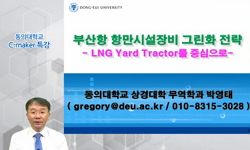선암사 목조아미타여래좌상은 불상의 복장에서 조성(1658년) 및 중수(1693년) 발원문이 출토되어, 선암사 불상의 제작시기를 조선시대 17세기 후반경의 작품으로 이해할 수 있다. 그러나 선암...
http://chineseinput.net/에서 pinyin(병음)방식으로 중국어를 변환할 수 있습니다.
변환된 중국어를 복사하여 사용하시면 됩니다.
- 中文 을 입력하시려면 zhongwen을 입력하시고 space를누르시면됩니다.
- 北京 을 입력하시려면 beijing을 입력하시고 space를 누르시면 됩니다.

부산 선암사 목조아미타여래좌상과 발원문 = The Wooden Amitabha Buddha in Busan Sunamsa Temple and Its Votive Documents
한글로보기https://www.riss.kr/link?id=A82604552
- 저자
- 발행기관
- 학술지명
- 권호사항
-
발행연도
2010
-
작성언어
-
- 주제어
-
KDC
911.005
-
등재정보
KCI등재
-
자료형태
학술저널
-
수록면
89-123(35쪽)
- DOI식별코드
- 제공처
-
0
상세조회 -
0
다운로드
부가정보
국문 초록 (Abstract)
선암사 목조아미타여래좌상은 불상의 복장에서 조성(1658년) 및 중수(1693년) 발원문이 출토되어, 선암사 불상의 제작시기를 조선시대 17세기 후반경의 작품으로 이해할 수 있다. 그러나 선암사 목조아미타여래좌상은 조선후기 17세기 불상과 양식적 공통점을 찾기 어렵고 조성당시 조각승의 수장이었던 희장(熙藏)의 다른 작품과도 유사성을 찾을 수 없다. 본고에서는 선암사 목조아미타여래좌상의 도상특징과 제작기법을 살펴보고 불상복장에서 출토된 발원문의 내용을 분석하였다. 또한 선암사 불상의 제작시기를 밝히고 발원문에 기재된 조각승의 작품을 비교 검토하여 불상과 발원문의 상관관계를 논의하였다. 그 결과 선암사 불상은 고려후기의 전통을 계승하여 제작된 조선전기 15세기 불상인 것을 알 수 있었다. 또한 2종의 발원문은 원문의 분석을 통해 현재의 부산 선암사에서 아미타불상을 조성하고 중수하면서 작성되었다는 것도 확인할 수 있었다. 발원문에 의하면 아미타불상은 1658년에 가덕진의 수군첨절제사(水軍僉節制使盧즙) 노즙(盧즙)을 위시하여 총 89명의 시주로 조성되었으며, 당시 조각승으로 활약했던 희장을 중심으로 6명이 참여하였다. 이후 1693년 중수에서는 총25명의 시주와 조각승 2인이 참여하였다는 것을 알 수 있다. 따라서 현재 선암사 불상과 복장에서 출토된 발원문은 동일한 제작시기의 것이 아니며, 발원문은 지금의 불상이 아닌 1658년에 부산 선암사에 봉안되었던 아미타불상의 복장발원문인 것을 알 수 있다. 부산 선암사 목조아미타여래좌상과 발원문의 연구는 조선시대 15세기에 조성된 불상작품과 복장에서 출토된 17세기의 발원문을 통해서, 조각사·문헌사·인물사적으로 새로운 자료를 발굴하여 해석할 수 있었다. 특히 조각승 희장과 관련해서 현존작품 이외에도 1658년에 부산 선암사 아미타여래상을 조성했다는 사실을 밝힐 수 있었다. 선암사 목조아미타여래좌상은 현재 부산지역의 조선시대 불상 중에서 가장 오래된 목조불상으로, 불상의 계보와 선암사에 봉안된 연유에 관해서는 앞으로의 과제로 삼고자 한다.
다국어 초록 (Multilingual Abstract)
A wooden figure of seated Amitabha Buddha of Sunamsa temple has been enshrined as a central buddha of the main building at Sunamsa temple and have been discoverd that it was made in 1658 and reconstructed in 1593, assuming that it was created around ...
A wooden figure of seated Amitabha Buddha of Sunamsa temple has been enshrined as a central buddha of the main building at Sunamsa temple and have been discoverd that it was made in 1658 and reconstructed in 1593, assuming that it was created around the late of the 17th century according to votive documents(發願文). On this thesis, I want to analyze its characteristics as well as the contents in detail and discuss upon it relationship with the statue itself and votive documents and need to confirm the date it was constructed. As a result, it was reflected this work was influenced by the art works of the 15th century in the Joseon Dynasty which was descented from the late Goryeo Period with its expressions, clothes, wrinkles as well as its brush techniques. Furthermore, these two votive documents was concluded that Amitabha Buddha was constructed at Busan Sunamsa temple. In other words, Amitabha Buddha was made in 1658 with the donation of 89 people along with No Jeop(盧즙), Navy General(水軍僉節制使) of Busan Gadeokjin(加德鎭) and the reconstruction in 1693 was with the donation of 25 people including 2 sclptures. In the conclusion, votive documents was not of current Busan Sunamsa temple and it was originally from Amitabha Buddha which had been placed at Sunamsa temple. The research of wooden figure of seated Amitabha Buddha in Sunamsa temple and votive documents was to introduce the new styles of buddhist art works of the 15th century and the type of votive documents in the 17th century as well as the sclptures` names which could be the key note for the study on the sculptures and various areas. In particular, although any works have not been found by Hee Jang(熙藏), the main sclpture of Busan Sunamsa temple Amitabha Buddha so far, new data has been discovered which is votive documents of Sunamsa temple Amitabha Buddha. This figure of Sunamsa temple is the oldest wooden buddhist sculpture in Busan area during the Joseon Dynasty, its historical background and the enshrined reasons would be considered afterwards.
동일학술지(권/호) 다른 논문
-
- 東亞大學校附設 石堂傳統文化硏究院
- 한정호 ( Joung Ho Han )
- 2010
- KCI등재
-
- 東亞大學校附設 石堂傳統文化硏究院
- 김영선 ( Young Seon Kim )
- 2010
- KCI등재
-
- 東亞大學校附設 石堂傳統文化硏究院
- 정은우 ( Eun Woo Jeong )
- 2010
- KCI등재
-
- 東亞大學校附設 石堂傳統文化硏究院
- 송은영 ( Eun Young Song )
- 2010
- KCI등재




 KCI
KCI KISS
KISS






